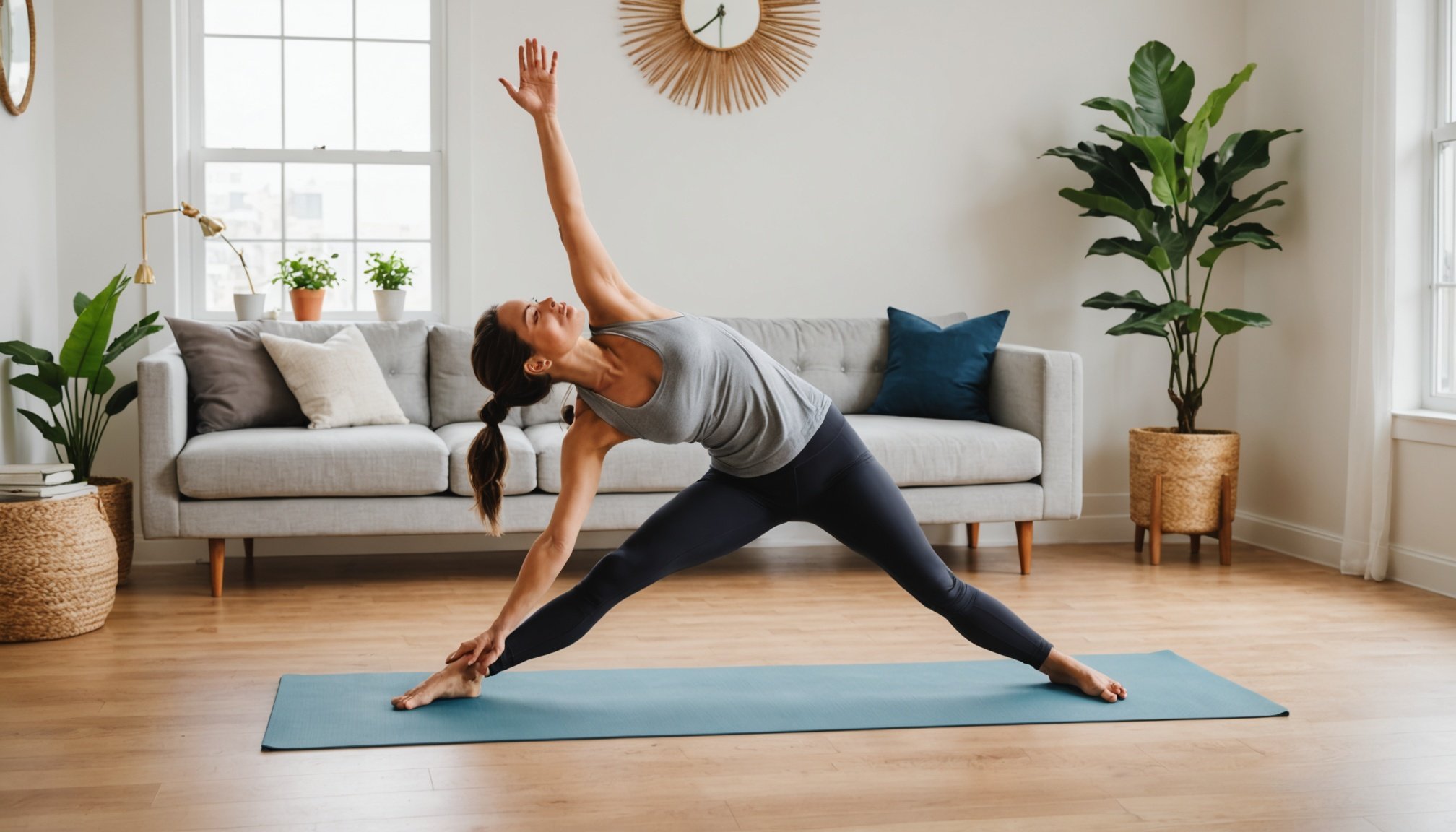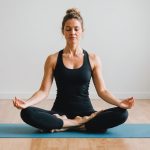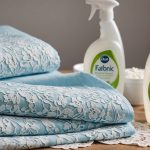Designing Your At-Home Yoga Oasis
Creating an at-home yoga space transforms your practice into a ritual, encouraging consistency and focus. A dedicated zone allows you to mark the change from everyday life to mindfulness. The essentials of an ideal yoga studio at home begin with choosing a serene location. Consider a quiet corner free from distractions where you can immerse in your practice.
Yoga environment design revolves around three main principles: space, light, and sound. Balancing aesthetics with functionality is crucial. Your space should be visually pleasing, yet free from clutter. This balance ensures your practice area supports both relaxation and energetic practices. Opt for natural light if possible; it uplifts the atmosphere and enhances mood.
This might interest you : Mastering Your Personal Stress-Relief Yoga Routine: A Comprehensive Step-by-Step Manual
Incorporate calming colours and textures in your setup. Soft rugs or yoga mats define the practice area, while plants add a touch of tranquillity and connection to nature. Storage solutions are essential for maintaining an organized yoga practice, allowing props and equipment to remain accessible yet out of sight when not in use. A carefully curated space enriches your yoga journey, providing daily motivation and a deeper connection to your practice.
Essential Items for Your Yoga Oasis
Selecting the right yoga mats and props transforms your yoga studio at home into an inspiring, practical space. The primary focus should be on choosing materials that suit both aesthetic preferences and functional needs. Material and thickness considerations for yoga mats depend largely on the type of practice and flooring. Mats with more padding are ideal for gentle practices, delivering comfort and support, while thinner mats offer stability during vigorous sessions.
Have you seen this : Homemade Oily Skin Face Mask: Craft Your Own Using Everyday Kitchen Items!
Choosing the Right Yoga Mat
When selecting a yoga mat, think about the surface — a non-slip texture improves safety and focus during practice. Consider your specific needs to amalgamate both comfort and balance.
Essential Props for Enhanced Practice
Must-have props such as blocks, straps, and bolsters are vital for enhancing various yoga styles—whether you’re stretching deep or maintaining certain poses. These items serve as extensions of your body, aiding in alignment and deepening practice.
Incorporating Additional Fitness Equipment
Completing your exercise equipment lineup with versatile gear ensures a well-rounded routine. Dumbbells, resistance bands, or even a foam roller can complement your yoga sessions by adding resistance and aiding in muscle recovery. Integrating these items makes your yoga environment design suitable for different workouts, keeping the practice exciting and comprehensive.
Creating the Right Ambiance
Crafting an ideal yoga ambiance is fundamental in elevating your at-home practice. The atmosphere should be inviting and soothing, enveloping you in a sense of calm from the moment you step into your space.
The Role of Lighting in Your Practice
Lighting plays a pivotal role in your yoga experience. Natural light invigorates and aligns with the diurnal rhythm, enhancing mood and focus. Where natural light is limited, opting for soft, adjustable artificial lights can mimic this effect and create a serene environment. Incorporate dimming options to adjust brightness according to the time of day and the mood you wish to set.
Using Sound to Enhance Focus
Sound in yoga ambiance can profoundly influence concentration. Consider background music or soundscapes that encourage tranquillity. Gentle instrumental tracks or environmental sounds like rain or birdsong can make a difference in relaxing or centering your practice. Experiment to find what resonates best with your routine.
Fragrances and Aromatherapy
Incorporating fragrances like essential oils adds depth to the sensory experience. Scents such as lavender or eucalyptus promote relaxation and enhance well-being. Aromatherapy can stimulate the senses, bringing an additional layer of peace and focus to your yoga sessions, making for a holistic practice environment.
Zoning Your Yoga Space
Creating an organised yoga space zoning is crucial for a transformative practice. Start by defining practice zones tailored to different yoga styles. Whether it’s a small corner for meditation or a broad area for dynamic sequences, dedicated zones enable a versatile and functional yoga layout.
Consider incorporating relaxation areas within your space. A comfortable nook with cushions, a soft throw, or mindful artwork can serve as a tranquil retreat for moments of reflection and rest. Having such areas defined encourages breaks for meditation and stretches, integral for a balanced practice.
Maintaining an organized yoga practice is vital. Use smart storage solutions like shelves, baskets, or wall hooks. This not only keeps your space tidy but also inspiring—ensuring everything from mats to props have a designated spot. An organised environment minimizes distractions and maximizes your practice’s efficiency.
Lastly, simplicity is key; choose furniture and decor that serve a purpose while maintaining a clean aesthetic. This balance ensures your at-home yoga studio remains both functional and inviting, fostering an enriching and focused yoga experience every time.
Expert Tips and Inspiration
Connecting with experienced yoga instructors can provide invaluable expert yoga advice for crafting a perfect at-home yoga oasis. These professionals often suggest enhancing your yoga studio at home with personal touches that reflect your journey and practice. Engage with yoga community insights to discover what truly resonates with dedicated practitioners.
Successful setups within the community offer a wealth of yoga design inspiration. Observe how others integrate personal elements while maintaining functionality. This could be as simple as adding a favourite piece of artwork or a family heirloom that brings comfort and motivation.
Seek advice on overcoming common challenges in designing a practice space. For example, instructors might suggest flexible storage solutions like foldable racks for organized yoga practice. Also, consider their input on how to blend aesthetics with practicality. Elements like a colour scheme that promotes focus and calm, or soundproofing tips, can enrich your practice environment.
Lastly, participating in online forums and local yoga groups can enhance your inspiration base. Such communities are a fantastic resource for feedback and fresh ideas, ensuring your space continually evolves to meet your needs. Engaging with this network fosters growth in your physical and mental yoga journey.











